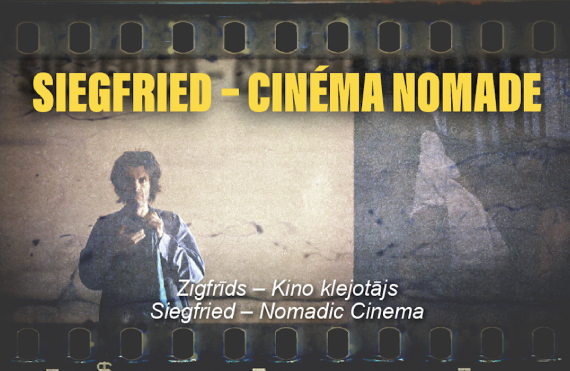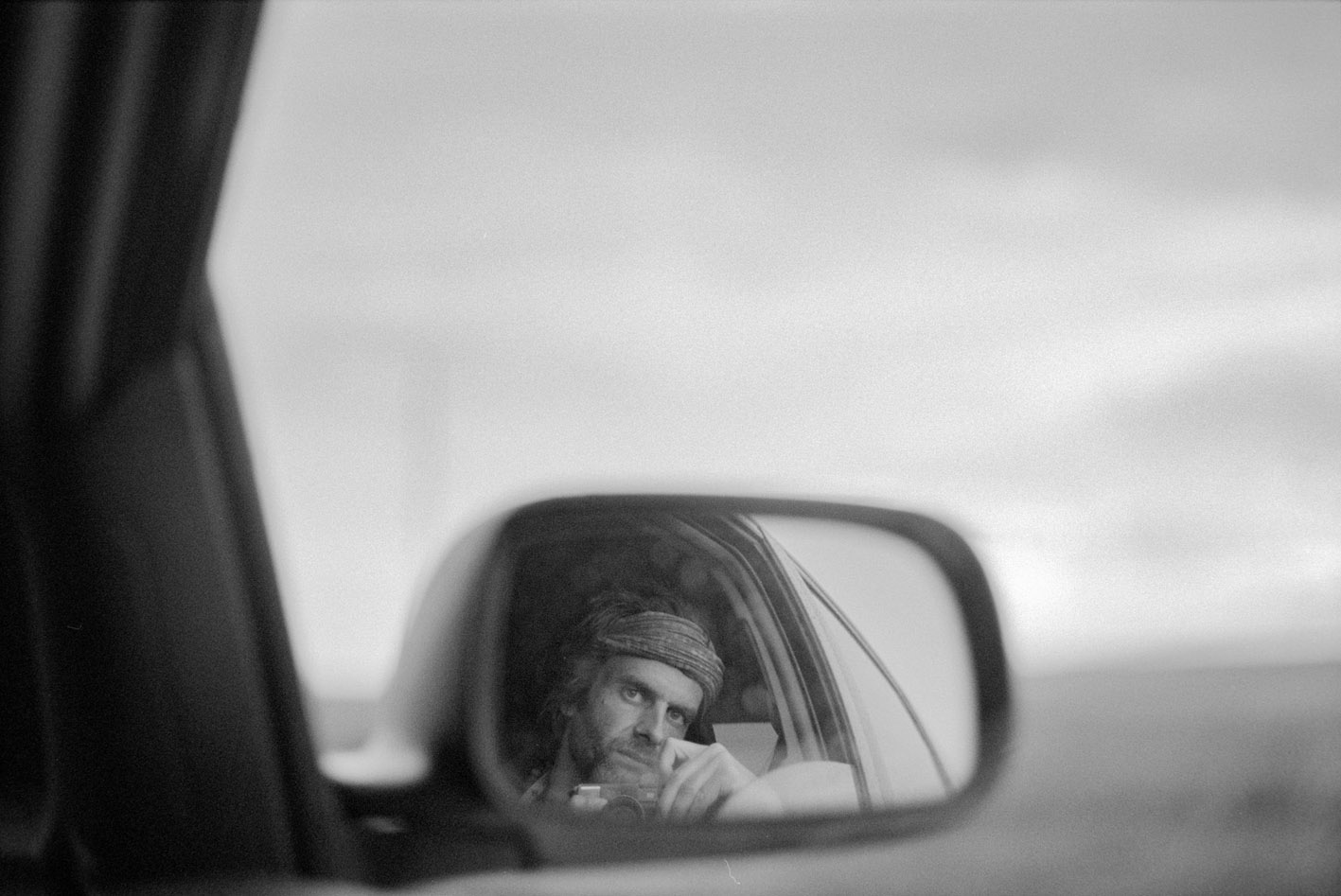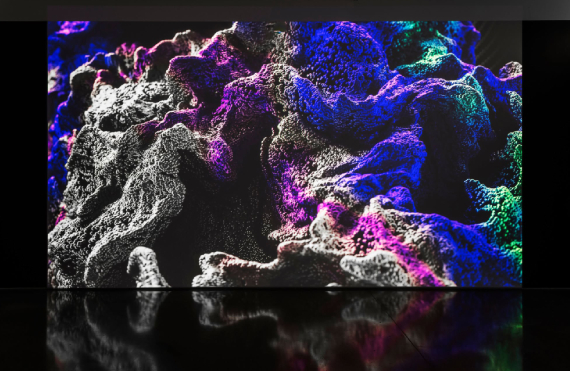Siegfried - Nomadic Cinema
12.04.-08.06.2025. 11.00-18.00From April 11 to June 8, Siegfried's exhibition “Nomadic Cinema” will be on view in the Great Hall.
The exhibition will offer an insight into the work of Sig (Siegfried Debrebant), a French composer, musician, film director and traveler of worlds. Although Sig's sudden death last autumn has radically altered the process of making this exhibition, and most likely the way we look at his oeuvre, which now is revealed in its totality, it is a full-fledged emanation of his ideas and presence.
The exposition is centered around the film Kinogamma I & II, which is more than two hours long masterpiece of ecstatic world view. It is complemented by black-and-white analog photographs taken during Sig's wanderings, which can be viewed both as a supplement to his cinematic vision of the world, as travel notes, or as an artistic inquiry into the mysteries of the human dimension.
Sig's film and photo works are permeated by an undisguised, perhaps even romantic fascination with the mundane, almost invisible substance of the human existence. The image appears here as a witness and interpreter of mysteries of time and being, where Bresson's "decisive moment" merges with the Mythical time in which all the present, past and future coexist, where the evanescent and timeless are intertwined into one inextricable totality.
In 1998, Siegfried Debrebant's (1973-2024) first feature movie "Louise (take 2)" was screened in the official selection of the Cannes Film Festival. Six more feature films followed, which were shot in various parts of the world and successfully screened at Cannes, Rotterdam, Sundance and other prestigious international film festivals. In 2004, the film "Sansa" was shown at the "Arsenals" film festival. In 2017, in Riga, Siegfried shot the film "Riga, take One". His feature film "Bengali Variation” shot in Calcutta was shown at the Riga IFF film festival in 2022.
Siegfried has written music not only for all his films, but also for films made by other directors. As a musician, under the pseudonym Sig, he has collaborated with such famous musicians as Ivry Gitlis, Erik Truffaz, Steve Lacy, Le mystère des voix Bulgares, Thomas Bangalter, Vladimir Volkov, Lewis Pragasam, Joy Frempong, and Latvian musician Artis Orubs. He has given solo piano concerts with the Russian, Ukrainian and Bulgarian Philharmonics and has released numerous music albums. His last concert took place on the stage of the "Kanepe Culture Center" (KKC) in August 2024.
The exhibition is organized by the Association of Culture Institutions of Riga State City Council and the exhibition hall Riga Contemporary Art Space with the support of the Riga City Council and Kaņepe Culture Center.
Lesia Vasylchenko’s solo exhibition ’Chronosphere’
09.05.-06.07.2025. 11.00-18.00The speculative notion of a “chronosphere” is the conceptual framework of Lesia Vasylchenko's first solo exhibition in Riga. Chronosphere, a constellation of interconnected works, explores the intricate interplay of temporal scales, ranging from the microtemporal, such as remote sensing of planetary surfaces and computational cycles, to the macrotemporal, including ecological trauma and the nuclear age. The Chronosphere exhibition extends its exploration of time to the context of the current war in Ukraine. The exhibition uncovers how war disrupts, ruptures, intersects with and reshapes the temporal fabric of human and more-than-human existence, embedding itself in personal and collective time.
Taking as a starting point Eduard Suess’s concept of Earth’s envelopes and Volodymyr Vernadsky’s notion of the Noosphere – the “sphere of human thought” – the Chronosphere represents an additional layer where time itself becomes a medium of interaction. Historical narratives, cultural artefacts and the scars of systemic inequities form the foundation of the now, while technologically predicted futures unfold as a response to these legacies.
The Chronosphere encapsulates the dynamic interactions between scales of time, highlighting how individual experiences are interwoven with planetary infrastructures and visionary technologies. It builds on Vasylchenko’s call to rethink the temporal dimensions of contemporary existence, urging us to move beyond linear narratives and into a realm of interconnected and simultaneous temporalities. It invites viewers to navigate the continuum of temporalities, uncovering the intimate and often invisible threads that bind us to one another and the world around us.
Lesia Vasylchenko (UA/NO) works across a range of media, including video, photography, installation and curation. In her research-based practice, Vasylchenko explores encounters between visual cultures, media technologies and chronopolitics. She is the founder of STRUKTURA. Time, a cross-disciplinary initiative for research and practice within the framework of visual arts, media archaeology, literature and philosophy. She holds a degree in journalism from the Taras Shevchenko National University of Kyiv and in Fine Arts from the Oslo National Academy of the Arts. Vasylchenko has recently exhibited at the Pochen Biennial for Multimedia Art (Ex Oriente Ignis), the Munch Museum’s Triennale (The Machine Is Us), and the Henie Onstad Triennale for Photography and New Media (New Visions). She was the recipient of the Sandefjord Kunstforenings Art Prize in 2023 (Norway) and has been nominated for the PinchukArtCentre Prize 2025. Her work is part of the collection of the Museum of Contemporary Art Kiasma/Finnish National Gallery in Helsinki, Finland.
Participant: Lesia Vasylchenko (UA/NO)
Curators: Inga Brūvere (LV), Marie Sjøvold (NO)
Partners: Riga State City Council, State Culture Capital Foundation of Latvia, Office for Contemporary Art Norway (OKA), Riga Art Week, Arctic Paper, printing house “Adverts”, Rixwell Hotels, Arterritory.com, Echo Gone Wrong, NOBA
Image: Lesia Vasylchenko, ’Chronosphere’
www.rpbiennil.com


